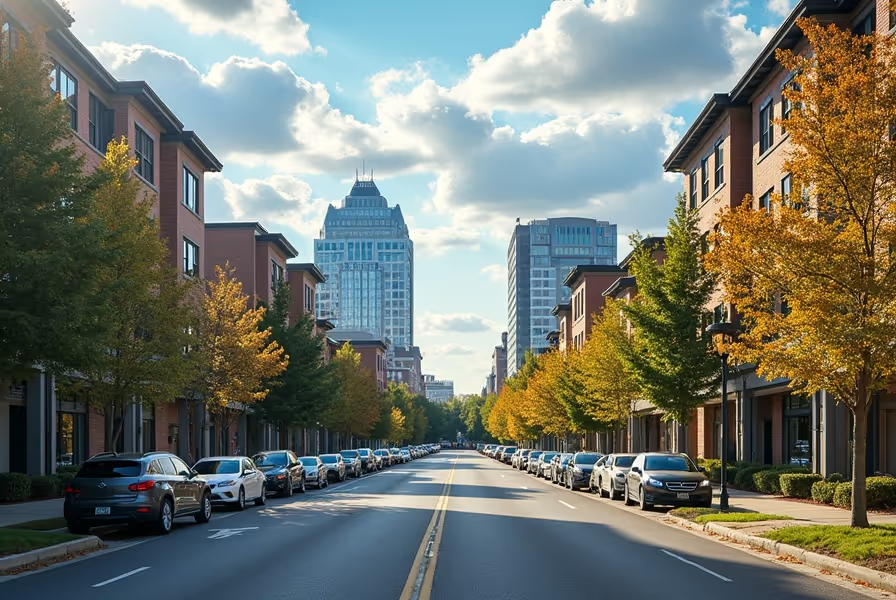Explore Raleigh, North Carolina: A Comprehensive Zip Code Overview
When you think about relocating, investing, or simply getting to know Raleigh, NC, understanding the city's zip codes can give you a distinct advantage. Raleigh’s neighborhoods offer unique vibes, community cultures, and convenient access. The right zip code can put you close to top schools, thriving job markets, and easy commutes. Whether you’re searching for Raleigh zip codes for homes, schools, or business, this guide breaks down everything you need to know.
The Structure of Raleigh Zip Codes: What You Should Know
Raleigh covers a diverse area with zip codes ranging primarily from 27601 to 27617. Wake County dominates the area, but some Raleigh mailing addresses stretch into parts of Durham and Johnston counties. Each zip code holds unique features, which can influence your lifestyle and even property values.
- 27601: Downtown, government and business district, close to museums and nightlife.
- 27603: Southwest Raleigh, a blend of urban and suburban.
- 27606: NCSU campus, research parks, and mixed communities.
- 27610: East Raleigh, diverse neighborhoods, and new housing developments.
- 27612: West Raleigh, access to Crabtree Valley Mall and greenways.
- 27615/27609: North Raleigh, popular for family living, parks, and shopping.
If you’re focused on school districts, commute times, or amenities, identifying the right Raleigh postal code is your first step.
Best Raleigh Neighborhoods by Zip Code
Want to know where most residents want to move? Several neighborhoods consistently rate high for quality of life, amenities, schools, and growth potential. Here’s a quick breakdown using highly searched Raleigh neighborhood zip codes:
- 27603 – Southwest Raleigh: Quick access to downtown and Cary, mixed-use communities, and new construction options.
- 27612 – Northwest Raleigh: Known for family-friendly streets, close to Crabtree Valley Mall, and Umstead Park; great for outdoor enthusiasts.
- 27613 – North Raleigh: Suburban lifestyle, top-rated schools, shopping centers along Six Forks Road.
- 27604 – Northeast Raleigh: Up-and-coming, diverse, and affordable, close to Triangle Town Center.
Searching for Raleigh, NC zip codes by neighborhood helps narrow your options and understand the local vibe.
Raleigh Zip Code Map: Visualization for Planning
A Raleigh zip code map helps you visualize boundaries, major roads, and proximity to business centers or Research Triangle Park. Zip code boundaries can cut across city limits or overlap with unincorporated areas of Wake County. Always confirm exact boundaries with local authorities or real estate professionals for accurate planning.
Raleigh Zip Codes for Major Landmarks and Institutions
If you're interested in Raleigh’s hotspots or educational centers, knowing their zip codes makes logistics simple.
- N.C. State University – 27607 and 27606
- Duke Energy Center for the Performing Arts – 27601
- Raleigh-Durham International Airport – 27623 (mailing), but technically in the 27703/27713 area
- Crabtree Valley Mall – 27612
- Pullen Park – 27603
- WakeMed Raleigh Campus – 27610
Having quick reference to the correct Raleigh zip code ensures your mail, navigation, and deliveries arrive as planned.
How to Select the Right Raleigh Postal Code for Your Next Move
Prioritize your needs. Are you looking for walkability, top-rated public schools, affordable housing, or luxury communities? Researching Raleigh real estate by zip code is a proven way to make an informed decision.
- Northwest zip codes (27612, 27615, 27613) are favored for strong schools and quiet streets.
- Downtown (27601) offers lively city living, walkable restaurants, and cultural attractions.
- Southeast zip codes (27610) often offer lower property prices and opportunities for first-time buyers.
Consult local experts to weigh the pros and cons of each. Proximity to highways like I-440 and I-540 can also heavily influence your choice.
Growth and Changes in Raleigh Zip Codes
Raleigh is one of the fastest-growing cities in North Carolina. New developments constantly shift boundaries and demographics. Neighborhoods south of downtown, like those in 27603 and 27610, are expanding rapidly. Always double-check for the most current information if planning a long-term commitment.
Related Questions About Raleigh NC Zip Codes
Frequently Asked Questions About Raleigh Zip Codes
How many zip codes are in Raleigh, NC?
Raleigh has over 20 primary zip codes, ranging from 27601 (downtown) to 27617 (northwest of the city near the airport). Some locations outside Raleigh’s official city limits use Raleigh zip codes as well.
Which Raleigh zip codes are best for families?
Zip codes 27612, 27613, 27614, and 27615 in North and Northwest Raleigh are popular with families due to highly rated schools, neighborhoods with parks and greenways, and shopping centers.
Are there Raleigh zip codes with more affordable housing?
Yes, zip codes in Southeast Raleigh such as 27610 and some areas in 27604 and 27616 typically offer more affordable home prices and rental rates compared to Northwest Raleigh and downtown.
Which zip code is downtown Raleigh?
The core of downtown Raleigh uses zip code 27601. Surrounding areas may use 27603 or 27604 depending on the specific neighborhood.
Does Raleigh share zip codes with other cities?
Some Raleigh zip codes extend into adjacent municipalities like Cary, Garner, and Knightdale. Always confirm specific addresses when researching real estate or public services.
Quick Tips for Using Raleigh NC Zip Codes
- Check school district boundaries as they can change between neighborhoods.
- Use a detailed Raleigh zip code map when planning your commute or home search.
- Businesses should consider demographic data within each postal code for targeted marketing.
- Verify whether your address falls under Raleigh city taxes or a neighboring town’s jurisdiction.
If you’re looking to settle, invest, or simply visit, Raleigh’s zip code system offers valuable insights into each neighborhood’s character and community resources.











.svg)



